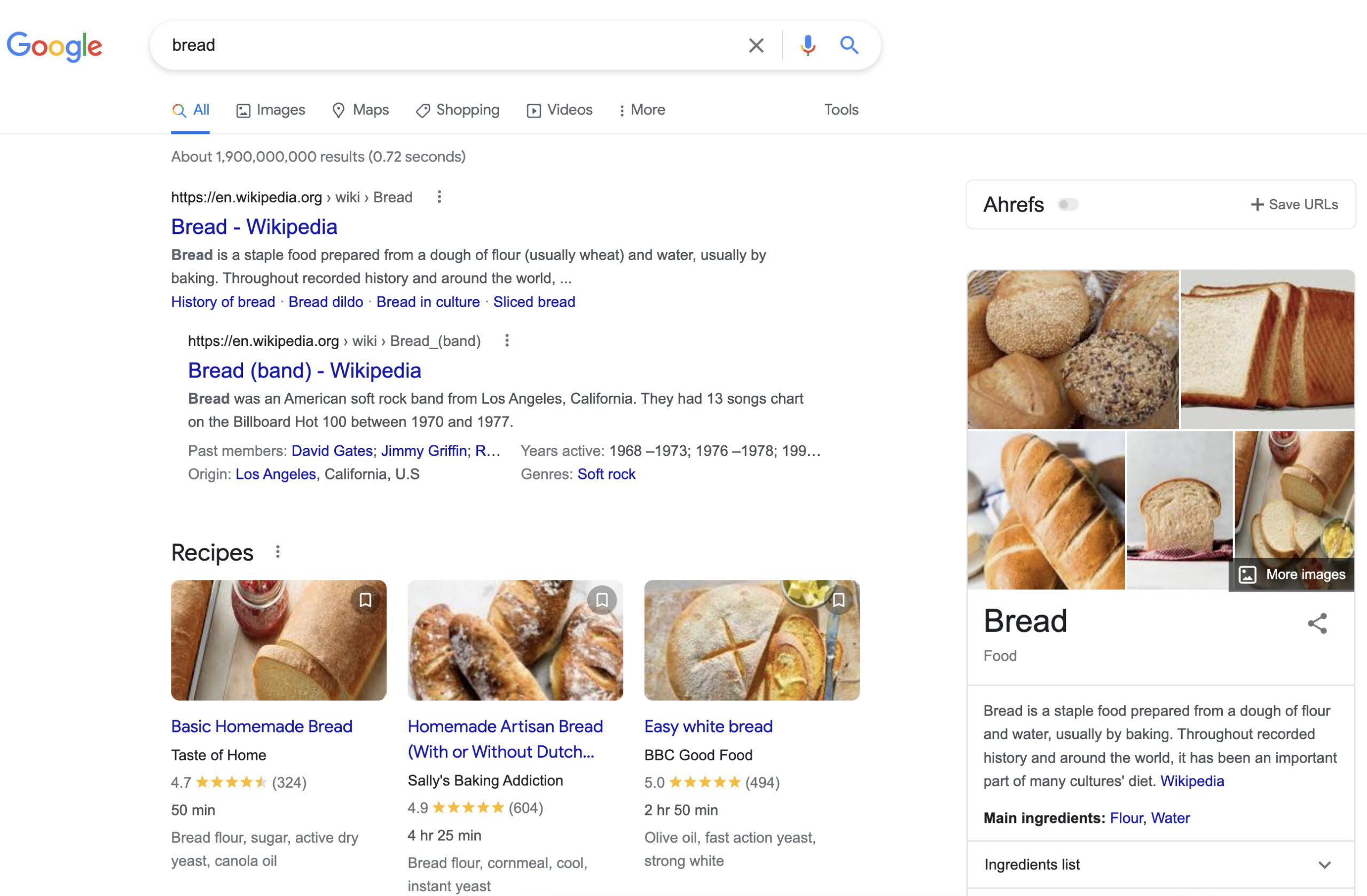Universal Search
What is Universal Search?
Universal search (also known as “Blended Search” or “Enhanced Search”) is the ability of a search engine to expand search results by blending results from different indexes (images, videos, maps, news, etc.) into a single search, where relevant.
Google introduced universal search in 2007 in an effort to better meet the users’ search intents and make SERPs more user-friendly by providing a broader range of relevant search results.

Before that, the SERPs looked a lot different, with nothing but a listing of 10 blue links leading to web pages. With the introduction of universal search, SERPs began to incorporate other media formats from multiple sources.
That increases the likelihood of Google instantly providing content that meets the user’s intent - while minimizing the number of search queries and additional clicks.
Why is universal search important?
“Enriching” the SERPs for particular search queries through the integration of different types of search results was a key part of Google’s effort to meet the user’s search intent and deliver the best results for each search request.
That’s in line with Google’s mission statement that mentions “organizing the world’s information and making it universally accessible and useful.”
From the user’s perspective, by drawing results from multiple sources, universal search makes it easier to get the most relevant results for a query.
And from the perspective of content creators, it is a chance to present different types of content and diversify traffic sources by ranking higher in “blended” search results.
SEO Best practices for universal search
With universal search, your goal is to optimize content for “blended” search results so that you can rank for different formats and earn high-quality organic traffic.
Consider these best practices as you work on maximizing your visibility in universal search results:
1. See what SERPs consist of
The first thing to do is to analyze search engine results pages (SERPs) - and see how the results look for different keywords.
It is possible that, for some search queries, the results will mostly consist of web pages. In other cases, videos, news, and images - or even SERP features or rich snippets - might dominate the results.
It depends on which format is the most relevant to the particular search query.
Analyzing the structure of SERPs for different search phrases will help you make an informed decision regarding the type of content you should produce and the keywords you should target.
Of course, this isn’t something you should do manually. Instead, use a filter in Ahrefs’ Keywords Explorer to analyze it in bulk for multiple keywords.
Here’s an example of keywords that return blended search results, including images and videos:

2. Optimize images and videos
You should also work on boosting the visibility of your non-textual content. For one, it will drive more organic traffic from universal search. And two, it will help improve the overall “reputation” of your website.
When optimizing images for universal search, you must help the search engine understand and interpret the images embedded in your webpage. You can achieve that by:
- Adding alt text for each image
- Using image captions to provide contextual information
- Using specific and descriptive image file names
- Ensuring that the surrounding content is relevant to the image
Video is a highly engaging media format that can help drive more organic traffic to your website. Essential aspects of video SEO include:
- Using proper schema markup to “explain” the video to the search engine
- Including closed captions (a text-based transcript of your video)
- Adding an engaging title and a relevant description
- Using a customized thumbnail image
- Enabling Key Moments with timestamps and labels for each segment
3. Use schema markup
Schema markup essentially helps Google better understand the type and format of your content. With properly implemented structured data your website can rank in Google’s rich results, such as news/articles, FAQs, videos, recipes, how-to’s, and more.
It provides context, shows the exact information the users are looking for, and makes your page stand out in SERPs. So, while there’s no evidence that it directly impacts ranking, these benefits could boost your organic click-through rates.
You can find the complete hierarchy of values and items you can mark up using schema tags at Schema.org and include bits of the semantic vocabulary (in the form of microdata) to the page’s HTML code. Use the Rich Results Test to test and validate the structured data.